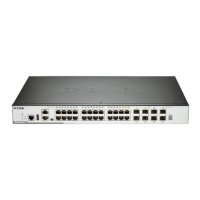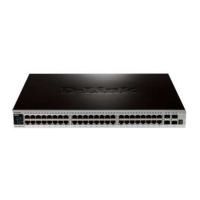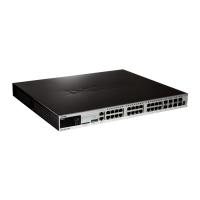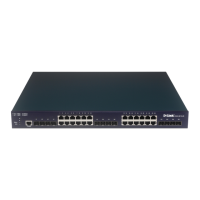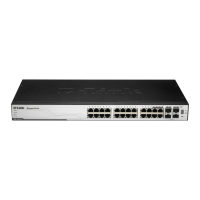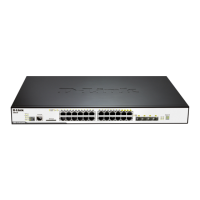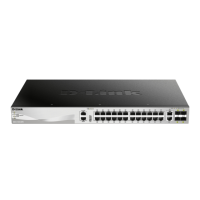DGS-3630 Series Layer 3 Stackable Managed Switch Web UI Reference Guide
38
to view read-only information or receive traps using SNMPv1 while assigning a higher level of security to another
group, granting read/write privileges using SNMPv3.
Using SNMPv3, users or groups can be allowed or be prevented from performing specific SNMP management
functions. These are defined using the Object Identifier (OID) associated with a specific MIB.
MIBs
A Management Information Base (MIB) stores management and counter information. The Switch uses the standard
MIB-II Management Information Base module, and so values for MIB objects can be retrieved using any SNMP-based
network management software. In addition to the standard MIB-II, the Switch also supports its own proprietary
enterprise MIB as an extended Management Information Base. Specifying the MIB Object Identifier may also retrieve
the proprietary MIB. MIB values can be either read-only or read-write.
The Switch incorporates a flexible SNMP management system which can be customized to suit the needs of the
networks and the preferences of the network administrator. The three versions of SNMP vary in the level of security
provided between the management station and the network device. SNMP settings are configured using the menus
located in the SNMP folder of the Web UI.
Traps
Traps are messages that alert network personnel of events that occur on the Switch. The events can be as serious as
a reboot (someone accidentally turned the Switch off/unplugged the Switch), or less serious like a port status change.
The Switch generates traps and sends them to the trap recipient (or network manager). Typical traps include trap
messages for Authentication Failure, Topology Change and Broadcast/Multicast Storm.
SNMP Global Settings
This window is used to display and configure the global SNMP and trap settings.
To view the following window, click Management > SNMP > SNMP Global Settings, as shown below:
Figure 4-7 SNMP Global Settings Window
The fields that can be configured in SNMP Global Settings are described below:
Parameter Description
SNMP Global State
Select this option to enable or disable the SNMP feature.
SNMP Response Broadcast
Request
Select this option to enable or disable the server to response to broadcast SNMP
GetRequest packets.
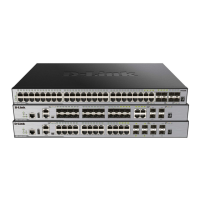
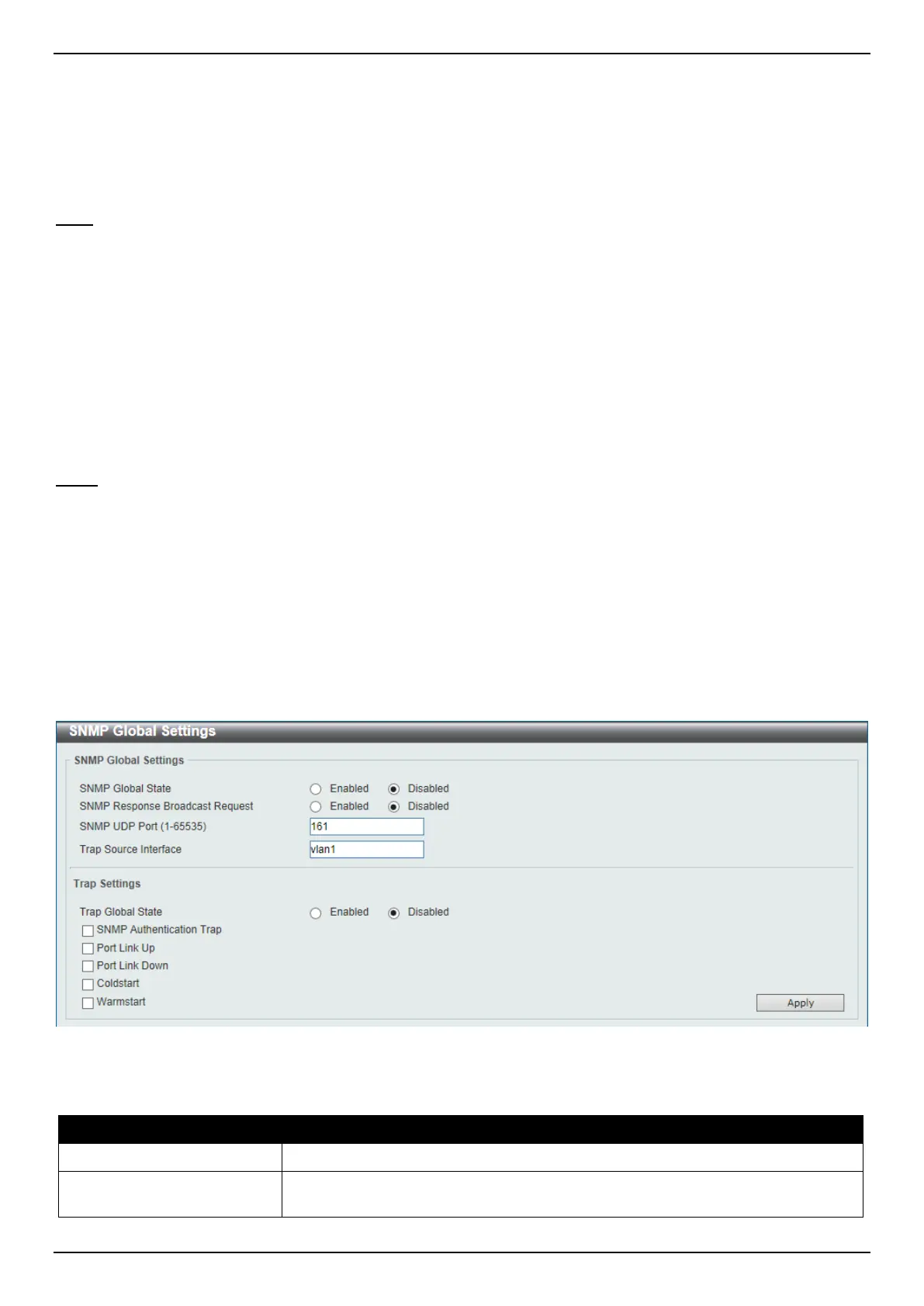